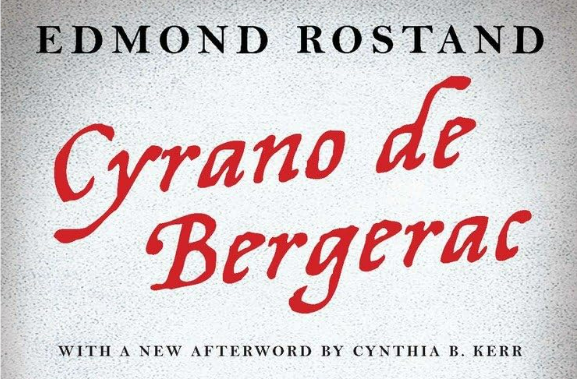Scene 5. I.
byScene 5. I. of Cyrano de Bergerac begins in the peaceful park of the Sisters of the Holy Cross in Paris, set in 1655, where the autumn beauty is captured in vivid detail. The scene is painted with the presence of grand trees, an expansive house with wide steps, and a large plane tree standing sentinel-like, surrounded by boxwood bushes. The park’s natural beauty extends further, with chestnut trees lining an alleyway that leads to a distant chapel, partially obscured by branches. The soft view of the park’s winding paths, clusters of trees, and green lawns creates a serene atmosphere, inviting both introspection and anticipation.
The autumn season is fully present in the scene, with its deep reds coloring the leaves and contrasting with the rich green lawns and dark boxwood and yew trees. Yellow leaves have scattered across the ground, lying on the steps and benches, their soft rustling heard as they are crushed underfoot. Among this quiet beauty, an unfinished tapestry is placed beside a chair, with baskets filled with skeins of wool, hinting at a calm, creative task left incomplete. This still life of nature, work, and reflection is underscored by the simple, yet evocative, image of the tapestry that mirrors the theme of things left unfinished or paused in time.
As the curtain rises, the stillness of the park is complemented by the gentle activities of the nuns. Some walk slowly around the grounds, others sit and converse on the stone bench, forming a peaceful community around the elder Sister. However, the tranquility is subtly interrupted by a moment of vanity from Sister Claire, who, caught glancing at herself in a mirror not once but twice, momentarily shifts the focus from the serenity of the surroundings to the personal concerns of the individuals in this peaceful enclave. This small act of self-reflection becomes symbolic of the balance between internal and external concerns within the otherwise quiet existence of the nuns.
This opening scene, with its rich imagery and calm pace, sets the stage for what is to unfold, evoking themes of reflection, time’s passage, and the intrusion of the outside world into this sanctuary. Through the descriptive backdrop and the nuns’ gentle routines, the scene establishes a contrast between the enduring peace of their secluded lives and the impending developments that will disrupt this calm. The beauty of the park and the simplicity of the moment prepare the audience for a deeper exploration of both the personal and external tensions that will drive the action of the final act. The mix of beauty, introspection, and subtle drama hints at an unfolding narrative that will contrast the tranquil life of the nuns with the drama and turbulence of the world outside their sanctuary.
The peaceful scene also serves as a reflection of the themes of time and change in the play. The nuns, wrapped in their routine, embody the passage of time in a life that seems untouched by the outer world. Yet, just as autumn signals the change of seasons, the brief interruption caused by Sister Claire’s vanity reminds us that, even in the most isolated or serene environments, the external world and its concerns will inevitably make their presence known. The opening sets the stage for a final act filled with deeper emotional and philosophical reflections on the nature of time, identity, and the boundaries between the external and internal worlds.
Through this portrayal, the scene emphasizes the contrast between a peaceful, orderly existence and the inevitable intrusion of larger forces—both personal and societal—that push individuals toward change and transformation. It subtly critiques the human tendency to be caught between the comfort of the familiar and the necessary confrontations with what lies beyond. The quiet beauty of the scene, tinged with the undertones of disruption, invites the audience to reflect on their own experiences of serenity and transformation.


